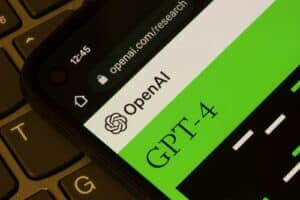Quick Overview:
- ReALM enhances voice assistants’ ability to interpret pronouns and indirect references naturally.
- It employs a novel method, turning the visual layout of a screen into a textual representation.
- This approach outperforms traditional methods, including GPT-4, making interactions more intuitive.
- It has vast potential applications, promising to improve user experience significantly.
- Set to revolutionize digital interaction, making devices understand us better.
Imagine chatting away with your digital assistant about the weather or setting reminders and diving into conversations with references as complex as those in a lively dinner chat among friends. Enter ReALM, short for Reference Resolution as Language Modeling, a groundbreaking approach developed by Apple’s bright minds, aimed at making your voice assistant understand and keep up with such chats. It’s about giving Siri, or any voice assistant for that matter, a hefty dose of intuition when it comes to understanding pronouns and indirect references, turning them from mere digital helpers into conversational wizards that can easily navigate the nuances of human language.
A Leap in Linguistics
The brains behind ReALM have crafted something special. They’ve developed a way for voice assistants to interpret pronouns and indirect references naturally, just like humans do. Now, imagine pointing to a picture on your device and asking, “What’s the story behind this?” With ReALM, your assistant won’t miss a beat. It will understand exactly what “this” refers to. Furthermore, this magic is possible because ReALM treats reference resolution not just as a side task but as a core aspect of language modelling. This includes understanding visual elements in a conversation.
ReALM: Next-Level Pronoun & Reference Interpretation
The methodology is as ingenious as it sounds. Firstly, by reconstructing the visual layout of a screen into a textual representation, ReALM allows digital assistants to “see” the screen as a text-based reflection of itself. This process includes parsing entities and their locations into text that mirrors what’s on the screen. Consequently, this enables a seamless blend of visual and verbal interaction. Essentially, it’s like allowing Siri to read the room—except the room is your screen.
From Visual Layout to Textual Understanding in AI
What sets ReALM apart is its ability to make interactions with voice assistants more intuitive and natural. Gone are the days of needing to describe what you’re referring to on your screen precisely. A casual reference is all it takes for a more understanding and responsive assistant. It’s a game-changer, significantly outperforming traditional methods, including OpenAI’s GPT-4.
Voice Assistants Leap Ahead with ReALM vs. GPT-4
From in-car systems to accessibility features, the potential applications of ReALM are vast. It promises to enhance user experience across various settings and introduce new AI features at significant events like WWDC. This technology addresses past challenges, such as inconsistencies in Siri’s ability to describe images, by accounting for on-screen content alongside conversational and background contexts.
From Cars to Accessibility: ReALM’s Wide Impact
As we look to iOS 18 and WWDC 2024, the future of digital interaction seems poised for a revolution. ReALM is not just an improvement; it’s a leap towards creating digital assistants that understand us better. With superior performance in domain-specific user utterances versus previous models, ReALM sets a new standard for how we interact with our devices, making Siri smarter and more useful than ever.











